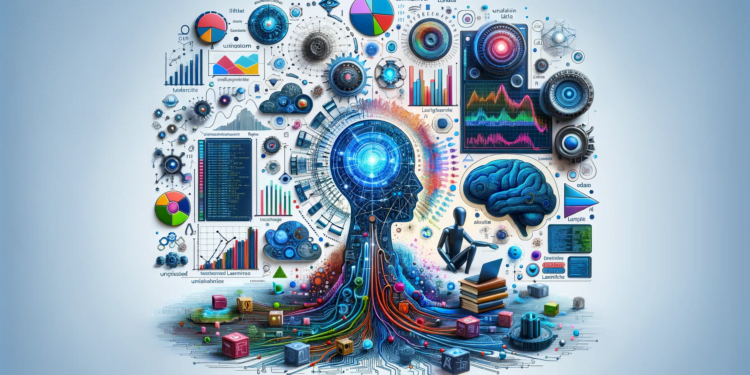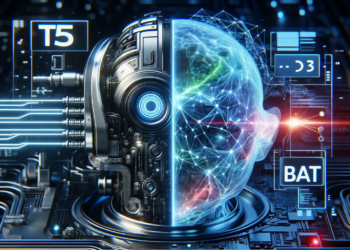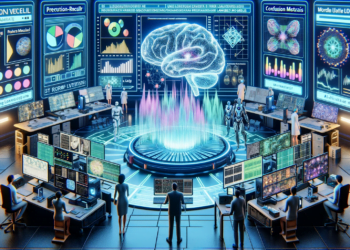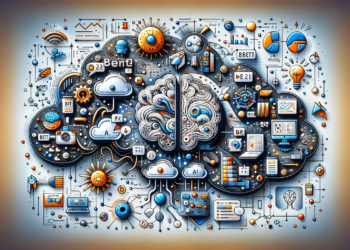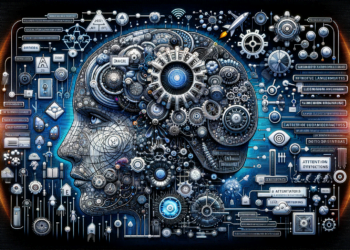Artificial intelligence (AI) has made remarkable strides over the past decade, primarily through language models that have radically transformed natural language processing (NLP). With the increasing availability of large volumes of data and the rise in computational power, more sophisticated techniques like knowledge transfer and semi-supervised learning have been developed. These methodologies stand at the forefront of AI research, enabling the creation of models that not only understand and generate text with human-like accuracy but also demonstrate an unprecedented capacity for adaptation and generalization.
Semi-Supervised Learning: Fundamentals and Recent Advances
Semi-supervised learning finds its niche in scenarios where there is a limited amount of labeled data and a larger quantity of unlabeled data. By integrating these two data streams, models can be built that learn more generalizable data representations, leading to improved performance in various NLP tasks.
Key Techniques and Algorithms
One of the most promising approaches in semi-supervised learning is Self-Training, also known as “pseudo-labeling.” In this method, an initial model is trained with a small set of labeled data and then used to label the unlabeled data set. Predictions made with high confidence are added to the original set of labeled data, and the training process is repeated. This iterative loop progressively expands the training set and subsequently refines the model.
Another significant technique is contrastive learning, which has proven effective in tasks that include text generation and comprehension. By focusing on learning representations that distinguish between positive and negative examples beyond labels, contrastive learning enhances the model’s ability to discern language nuances contextually.
With the advancement of Generative Adversarial Network (GAN) architecture, some researchers have explored its application in semi-supervised learning. In this setting, the generator attempts to produce data indistinguishable from a real training set, while the discriminator strives to differentiate between real and generated data. The competition between these two modules results in a refinement in the ability to generate and understand language.
Case Studies: ULMFiT and BERT
The ULMFiT (Universal Language Model Fine-tuning) approach has been a pioneer in applying knowledge transfer techniques in NLP. ULMFiT uses a pre-trained language model on a vast corpus and then employs a gradual fine-tuning process on specific tasks. This has resulted in significant improvements in text classification tasks and has laid the groundwork for exploring how general-purpose language models can be adapted to specialized tasks.
BERT (Bidirectional Encoder Representations from Transformers), on the other hand, adopted a bidirectional attention approach that resulted in a deeper contextual understanding of text. Being pre-trained on a massive corpus and then fine-tuned on specific tasks, BERT has established a new state-of-the-art in numerous NLP benchmarks. Its semi-supervised orientation during pre-training, using both labeled and unlabeled data, contributes to its generalized capacity for linguistic comprehension.
Knowledge Transfer: Strategies and Optimization
Knowledge transfer is the process by which a model applies the knowledge learned from one task to another related task. This approach is crucial, mainly because it allows for a significant economy of resources and time.
Transfer Learning and its Trends
In knowledge transfer, we are looking at a scenario with two main components: the source model, pre-trained on a task with abundant data; and the target model, fine-tuned for a specific task, often with sparser data. This process typically requires a careful selection of the learning rate and a freezing stage of layers to prevent the overwriting of pre-existing knowledge.
Fine-Tuning and Promptness in Transfer
The effectiveness of fine-tuning depends on the relevance between the source and target tasks. Research has shown that freezing certain layers of the model during transfer can preserve more general knowledge, while fine-tuning the upper layers can better adapt to the specific task.
Challenges and Future Directions
Despite the progress, semi-supervised learning and knowledge transfer face challenges, such as adaptability to new domains and the interpretation of complex models. In addition, there is the issue of responsibility and ethics when it comes to biased data.
Innovations and Impact
The industry is keenly observing the potential applications of these advanced techniques. From the development of more empathetic and situationally aware chatbots to automated summary generation systems for medical reports, knowledge transfer and semi-supervised learning are revolutionizing the way we interact with language-based technology.
Conclusion
The convergence of knowledge transfer with semi-supervised learning in language models is an intensely dynamic and promising area of artificial intelligence. As scientists continue to unravel the underlying mechanisms and improve methodologies, these models advance towards a deeper and more nuanced understanding of human language, opening up new avenues of innovation in countless application fields.

